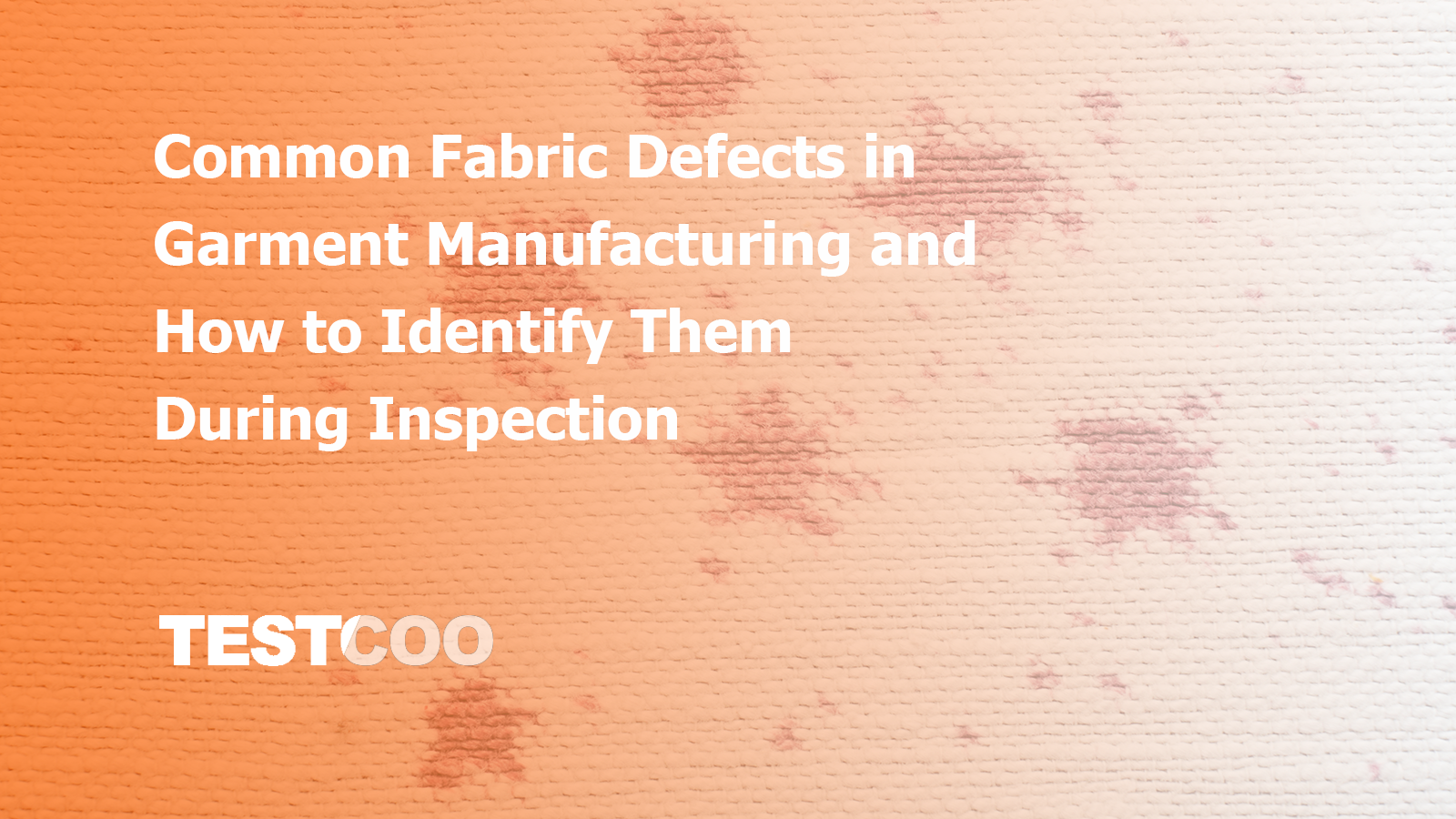Third-Party QC vs. In-House QC in 2025: Unraveling the Cost-Effectiveness Mystery

Introduction
Set the Stage
In 2025, as global trade continues to expand and supply chains grow increasingly complex, quality control (QC) has become more crucial than ever for the success of businesses. Whether a company is a small-scale enterprise or a multinational corporation, the way it ensures the quality of its products can significantly impact its bottom line and market reputation. The choice between different quality control approaches, such as third-party QC and in-house QC, is a decision that can sway the cost-effectiveness of operations and the overall quality of the end products. A wrong decision may lead to higher costs, lower product quality, and decreased customer satisfaction, while a well-considered choice can enhance efficiency, cut down on waste, and boost competitiveness.
Define Key Terms
Third-party QC refers to outsourcing the quality control functions to an independent external organization. These third party companies are specialized in conducting inspections, tests, and audits on products or services on behalf of the client. They bring in expertise, industry - wide best practices and often have a global network that can be deployed to different production sites.
In-house QC, on the other hand, involves a company establishing and maintaining its own quality control department. This internal team is responsible for all aspects of quality management, from setting quality standards to conducting inspections at every stage of the production process. They are an integral part of the company's organizational structure and work closely with other departments such as production, R&D, and sales.
When discussing cost-effectiveness, it's important to note that it encompasses both direct and indirect costs. Direct costs include things like labor costs for QC personnel, equipment purchases or rentals for testing, and the cost of any materials used in the quality control process. Indirect costs can involve expenses related to potential production delays due to quality issues, damage to the company's reputation, and the cost of lost business opportunities as a result of poor-quality products.
Present the Thesis
The aim of this article is to delve deep into the comparison between third-party QC and in-house QC in terms of cost-effectiveness in 2025. By examining the various factors that contribute to the costs and benefits of each approach, we hope to provide businesses with valuable insights. This will enable them to make an informed decision on which quality control method is more suitable for their specific needs, whether they are aiming to cut costs, improve quality, or both.
The Case for Third-Party QC
Cost Structure Breakdown
The cost of third-party QC mainly consists of service fees charged by the external organization and, in some cases, travel expenses if the inspection needs to be carried out at a remote production site. For example, for a small-scale e-commerce business that sources products from a local factory, if it hires a third-party QC company for a one-time pre-shipment inspection of a batch of 500 products, the service fee might range from $500 to $1000, depending on the complexity of the product and the inspection requirements. Since the factory is local, travel expenses may be negligible.
In contrast, a large-scale multinational company that has production facilities in multiple countries and needs regular QC inspections at different sites will have a more complex cost structure. Suppose this company has a production plant in Southeast Asia and requires monthly production-in-progress and pre-shipment inspections. The third-party QC service fee could be a recurring monthly expense of several thousand dollars. Additionally, travel expenses for the QC inspectors, including airfare, accommodation, and local transportation, can add up to a significant amount, potentially several thousand dollars per inspection trip, depending on the distance and the length of stay at the production site.
Specialized Expertise and Equipment
Third-party QC companies often have a distinct advantage in terms of specialized expertise and equipment. In the highly technical electronics industry, for instance, the demand for precision is extremely high. A third-party QC company that focuses on electronics can invest in state-of-the-art inspection equipment such as high-magnification microscopes for inspecting circuit boards, automated optical inspection (AOI) machines that can quickly and accurately detect defects in electronic components, and advanced testing software for evaluating the functionality of electronic devices.
Moreover, these companies can attract and retain highly skilled professionals with in-depth knowledge of the latest industry standards and regulations. They are well-versed in the specific requirements for different types of electronic products, whether it's smartphones, laptops, or smart home devices. This expertise allows them to conduct more comprehensive and accurate inspections compared to an in-house team that may not have the same level of specialization or access to such advanced equipment, especially in smaller companies with limited resources.
Flexibility and Scalability
One of the significant benefits of third-party QC is its flexibility and scalability, which is particularly advantageous when dealing with fluctuating business volumes. Consider a clothing manufacturer that experiences a sharp increase in orders during the holiday season. In the months leading up to the holidays, the production volume might triple or even quadruple. By outsourcing QC to a third-party provider, the manufacturer can easily scale up the inspection services. The third-party QC company can quickly deploy additional inspectors or increase the frequency of inspections to meet the higher production output, ensuring that the quality of the large number of products being produced remains high.
Conversely, during the off-season when production levels drop significantly, the clothing manufacturer can scale back on the third-party QC services, reducing the associated costs. This flexibility allows the company to avoid the expense of maintaining a large in-house QC team during slow periods, where the full-time employees may be underutilized. A case in point is a small- to medium-sized clothing brand that was able to save approximately 30% on its quality control costs during the off-season by relying on third-party QC services, as it only paid for the inspections it actually needed.

Testcoo's Third-Party QC Services
Testcoo offers a comprehensive range of third-party QC services tailored to meet the diverse needs of businesses. Our services include pre-production inspections, where we assess raw materials and initial product samples to ensure that the production process starts on the right foot. During production-in-progress inspections, we monitor the manufacturing process at key stages to catch any potential quality issues early, reducing the likelihood of costly rework later. Our pre-shipment inspections are thorough, covering all aspects of the finished product, from its functionality and appearance to its packaging, to guarantee that the products shipped to customers meet the highest quality standards.
One of the key advantages of Testcoo's services is our global network of experienced inspectors. They are well trained in various industry standards and are able to adapt to different production environments. We also provide real-time reporting, allowing clients to stay informed about the inspection progress and results immediately. This transparency and efficiency not only help our clients ensure product quality but also contribute to cost-effectiveness by minimizing the risks associated with low-quality products, such as returns, replacements, and damage to brand reputation.
The Case for In-House QC
Initial Investment and Fixed Costs
Building an in-house QC team requires a significant initial investment. The first major expense is equipment procurement. For example, a furniture manufacturing company aiming to establish in-house QC would need to purchase a variety of testing equipment. This could include load-testing machines to assess the durability of chairs and tables, moisture meters to measure the humidity levels in wooden materials (which is crucial for preventing warping), and color-matching tools to ensure that the finishes on different furniture pieces are consistent. The cost of these specialized tools can range from a few thousand dollars for basic models to tens of thousands for more advanced, high-precision equipment.
In addition to equipment, hiring and training personnel are substantial costs. Recruiting experienced quality control professionals often means offering competitive salaries. A senior QC manager with years of industry experience may command an annual salary of $80,000 - $120,000, depending on the region and the complexity of the work. Newly hired QC staff also need comprehensive training to ensure they are well-versed in the company's quality standards, inspection methods, and relevant industry regulations. Training programs can include on-the-job training, workshops led by internal or external experts, and online courses. The cost of training materials, instructor fees, and the time employees spend in training can add up to a significant amount, potentially several thousand dollars per employee in the first year.
Read more:Load Testing Best Practices | LoadNinja
Integration with Company Culture and Processes
One of the primary advantages of an in-house QC team is its seamless integration with the company's culture and processes. In a software development company, for instance, the in-house QC team is an integral part of the development cycle. They work closely with the development teams from the initial stages of product design. When a new software feature is being planned, the QC team can provide input on potential quality-related issues, such as compatibility problems with existing systems or user-experience glitches that may arise.
This close integration allows for rapid response times. If a production line in a manufacturing plant encounters a quality issue, the in-house QC team can be on-site within minutes. They can immediately start analyzing the problem, whether it's a malfunctioning machine that's causing product defects or an issue with the raw materials. For example, in a food processing plant, if the in-house QC team notices that the packaging of a particular product is not sealing properly, they can quickly collaborate with the production and engineering teams. They can jointly identify the root cause, which could be a problem with the packaging machine's settings or a change in the packaging material. This immediate response helps to minimize production downtime and prevent a large number of defective products from being produced.
Long-Term Cost Considerations
Over the long term, an in-house QC team can play a crucial role in cost control. By having full-time, dedicated quality control personnel, a company can reduce its dependence on external providers. This means that there are no recurring service fees paid to third-party QC companies, which can be a significant cost savings over the years.
Moreover, the in-house team's in-depth knowledge of the company's products and processes can lead to more efficient communication. They can communicate directly with other departments in the company, such as production, R&D, and supply chain management. This reduces the need for complex communication channels that are often required when working with external QC providers. For example, when a company needs to make a change to its product design based on customer feedback, the in-house QC team can quickly communicate with the R&D department. They can provide insights on how the design change may impact quality and work together to develop a quality control plan for the new design. This seamless communication helps to avoid misunderstandings and delays that could potentially lead to increased costs.
Comparative Analysis
Cost Comparison in Different Scenarios
When it comes to cost-effectiveness, the choice between third-party QC and in-house QC can vary significantly depending on the business scale and industry. Let's first consider the business scale. For small-scale enterprises with an annual production volume of less than 10,000 units, setting up an in-house QC team can be a costly affair. The fixed costs of equipment purchase and personnel recruitment can quickly become a heavy burden. In contrast, hiring a third-party QC service on an as-needed basis can be much more cost-effective. For example, a small handicraft business that produces around 5,000 handmade products per year may spend 30,000-50,000 on setting up a basic in-house QC setup in the first year, including equipment and initial training. However, if they use third-party QC services, they might only spend 5,000-10,000 annually for the same level of quality control.
For large-scale enterprises with an annual production volume exceeding 500,000 units, the situation can be different. Once the initial investment in an in -house QC team is made, the cost per unit of quality control can decrease significantly over time. As shown in the following table:
Business Scale | Third Party QC Annual Cost | In - House QC Annual Cost (After Initial Investment) |
Small-scale (less than 10,000 units) | 5,000-10,000 | 30,000-50,000 (first year), then 20,000-30,000 annually |
Medium-scale (10,000-500,000 units) | 20,000-100,000 | 50,000-200,000 (first year), then 30,000-80,000 annually |
Large-scale (more than 500,000 units) | $100,000+ | 100,000-300,000 (first year), then 50,000-150,000 annually |
In terms of industry differences, the electronics industry, which requires high-precision testing equipment and highly skilled technicians, often benefits from third-party QC services. The cost of maintaining a state-of-the-art in-house QC laboratory with the latest testing equipment for electronics can be exorbitant. A third-party QC provider can spread these high costs across multiple clients, making their services more affordable for individual electronics companies. On the other hand, in the textile industry, where the quality control process is relatively more straightforward in some aspects, an in-house QC team can be more cost-effective, especially for large textile manufacturers with high production volumes. They can train their in-house staff to perform the necessary fabric inspections, color-fastness tests, and seam-strength checks at a lower cost per unit compared to outsourcing.

Quality and Risk Management
From the perspective of quality assurance and risk control, both third-party QC and in-house QC have their own advantages. Third-party QC companies are known for their independence. Since they are not part of the client's organization, they can provide an unbiased assessment of product quality. This is particularly important when dealing with high-stakes situations, such as when a company is about to launch a new product line. For example, in the automotive industry, a third-party QC inspection can offer an objective view of the safety features, performance, and overall quality of a new car model before its mass production. This independent evaluation can help identify potential risks that an in - house team, which may be influenced by internal pressures or company politics, might overlook.
In-house QC teams, on the other hand, have an in-depth understanding of the company's products, processes, and corporate culture. They are involved in the day-to-day operations and are more familiar with the subtleties of the production process. In a software development company, the in-house QC team knows the development history of the software, the specific requirements of different modules, and the quirks of the programming languages used. This knowledge allows them to conduct more targeted and detailed quality control, especially in areas where the product has unique features or where the production process has been customized to meet the company's specific needs. They can also respond more quickly to emerging quality issues during the development cycle, reducing the risk of costly delays or major product defects.
Hidden Costs and Strategic Considerations
There are hidden costs associated with both third-party QC and in-house QC that need to be considered. For third-party QC, communication can be a significant hidden cost. Coordinating with an external organization requires clear and frequent communication to ensure that the QC requirements are well understood. This may involve time-consuming meetings, email exchanges, and phone calls. If there are misunderstandings in communication, it can lead to incorrect inspection results, delays in the inspection process, or additional costs for reinspections. For example, a clothing brand that outsources its QC to a third-party company may find that differences in language, cultural norms, and business practices can make communication challenging. This can result in the third-party QC company misinterpreting the quality standards for fabric texture or color, leading to products being rejected or having to be reinspected.
For in-house QC, a strategic consideration is how it impacts the company's core competitiveness. While having an in-house team can provide immediate control over quality, it may also divert resources and attention from the company's core business activities. A startup technology company that focuses on developing innovative software solutions may find that investing a large amount of resources in building and maintaining an in-house QC team takes away from its ability to invest in research and development, marketing, or customer acquisition. In such cases, outsourcing QC to a third-party provider can free up internal resources to focus on the company's strategic priorities, such as enhancing product features or expanding into new markets.
Conclusion
Summarize the Main Points
In summary, third-party QC offers the advantage of cost-effectiveness in the short term for many businesses, especially those with limited production volumes or fluctuating demands. Their specialized expertise and equipment, as well as flexibility in scaling services, can lead to significant cost savings and high-quality inspections. However, communication costs and potential misunderstandings can be drawbacks.
On the other hand, in-house QC teams, although requiring a large initial investment, can be more cost-effective in the long run for large-scale enterprises with high production volumes. Their seamless integration with company culture and processes allows for quick responses to quality issues and in-depth understanding of the company's unique product requirements.
Offer a Balanced Recommendation
For small-scale enterprises or those in industries with rapidly changing production volumes, such as fashion or seasonal consumer goods, third-party QC services provided by Testcoo can be an ideal choice. It allows them to access professional QC services without the burden of high fixed costs.
Medium-sized companies may consider a hybrid approach. They can use third-party QC for special projects, new product launches, or when dealing with suppliers in unfamiliar regions, while maintaining a small in-house QC team for day-to-day quality monitoring.
Large-scale enterprises with established production processes and a long-term commitment to quality may find it more beneficial to invest in an in-house QC team. However, they can also complement their in-house efforts with third-party QC services for periodic external audits or when entering new markets with different regulatory requirements.
Looking Ahead
Looking to the future, the QC industry is likely to witness significant technological innovation. The use of artificial intelligence and machine learning in quality control is expected to grow. These technologies can automate certain aspects of the inspection process, such as defect detection in manufacturing, reducing the need for extensive manual labor. This, in turn, may lead to cost savings for both third-party QC providers and companies with in-house QC teams. Additionally, the increasing globalization of supply chains will continue to drive the demand for reliable quality control services, whether provided by third parties or in-house teams. As businesses strive to meet the ever-increasing quality expectations of consumers and regulatory bodies, the choice between third-party QC and in-house QC will remain a crucial decision, one that will shape the cost-effectiveness and success of their operations in the dynamic business landscape of tomorrow.
Free Sample Report Performance Quality Control
Download a sample report to keep control of your supply chain!
Featured Articles
 AQL Table | How to Read It
AQL Table | How to Read It TOP 10 Common Defects in Garments Quality Inspection
TOP 10 Common Defects in Garments Quality Inspection Product Packaging and Shipment Label requirements for Amazon FBA
Product Packaging and Shipment Label requirements for Amazon FBA What Is ASTM-F2413-18? Protective Footwear Standard
What Is ASTM-F2413-18? Protective Footwear Standard How to Conduct Third-Party Quality Control Inspections for Electric Scooters
How to Conduct Third-Party Quality Control Inspections for Electric Scooters SMETA Audit-What is SMETA Audit?
SMETA Audit-What is SMETA Audit? TESTCOO Supplier Verification/Certification Service SLCP, Higg FEM, GRS, GOTS
TESTCOO Supplier Verification/Certification Service SLCP, Higg FEM, GRS, GOTS Quality Control Inspection Company in China
Quality Control Inspection Company in China What is Quality Inspection? A Complete Guide
What is Quality Inspection? A Complete Guide Guidelines for Product Inspection in India
Guidelines for Product Inspection in India
Category
- Production Inspection Service
- Factory Audit
- Softline Inspection
- Hardline Inspection
- Electrics Inspection
- Certification
- Checklist
- Manufacturers
- Quality Assurance Basics
- Products Recall
- AQL
- Guidence and Standard
- News
- Supplier Management
- Amazon
- Protective Equipment
- e-commerce quality control
- Indian Manufacturing
- Soft Goods Quality Control
- Supply Chain Management
- Supply Chain Resilience
- E-Commerce Quality Control
- ISO 2859
- Supply Chain Optimization
- Garment Industry
- Higg Index




